Helminths are subcutaneous parasites that live in the human body. They feed on host cells, releasing toxic substances. Infection with parasites can lead to serious illness, in the worst cases, death. Depending on the type of worm, the place of dislocation is different. Some multiply in organs, some live under human skin, triggering the development of dermatosis.
Varieties of subcutaneous parasites and methods of infection
Parasitic skin disease is not a common type of pathology. Even so, cases of the disease have been reported. They are most likely after visiting Asian regions and countries with hot climates. Parasites in the human body cause allergic reactions, accompanied by unbearable itching.
In medicine, worms are divided into two types:
- Subcutaneous. Helminths are difficult to diagnose. After infection and the maturation stage, the parasite moves through the human body. The most common types of subcutaneous helminths are: iron, mite scabies, filariae, rishta.
- Dermal. After contact with human skin, parasites migrate to different parts of the body. As a result of infection with skin parasites, inflammation of the pancreas occurs, the development of scaly lichen, eczematosis, and diabetes mellitus.
Common cases include infections with lice that are localized in the sebaceous glands. It is distinguished by an exit to the surface of the epidermis during the day to feed secretions from the skin ducts.
Filariasis
Filariasis is the defeat of a person by a nematodosis type parasite. It is found in countries of the Asian region, as well as in places with tropical climates. The most likely mode of infection is when visiting a resort area. The main danger of parasites is the long incubation period. Without showing symptoms, worms can live under the skin for 5 to 7 years. Pests are distinguished by excessive vital activity, which provokes symptoms of intoxication in patients.
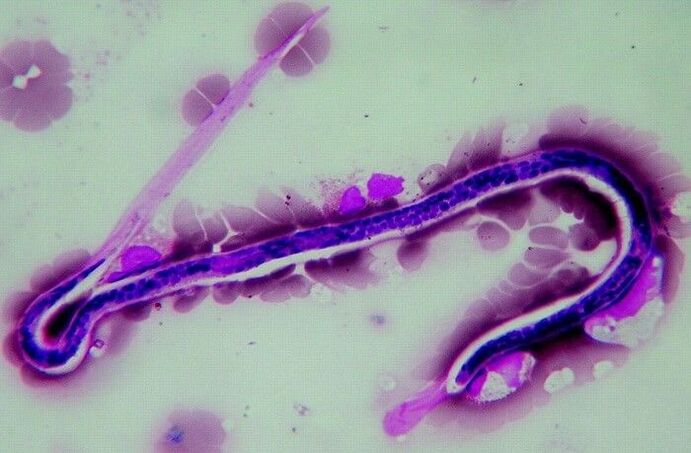
In the early stages, the disease has signs of urticaria. When worms grow and reproduce, there is loss of vision, formation of mobile seals, and fever. At a later stage, worm localization is determined with the naked eye.
Dracunculiasis
Dracunculiasis is a disease triggered by infection with subcutaneous helminths. They are able to live in open water. Human attacks occur during travel, when drinking raw water from unconfirmed sources. In infected people, the larvae are localized below the top layer of the epidermis. The presence of even one parasite without proper treatment leads to death. In world practice, adult helminths with a length of 100 centimeters have been registered. They are able to occupy the entire space of the stomach, liver, or block the airways. Often, helminths are localized in the lower part of a person’s body.
Often, helminths are localized in the lower part of a person’s body.
The main symptoms of the lesion include:
- rash on the feet;
- formation of fluid -filled blisters;
- unbearable itching;
- appearance of lumps;
- purulent formation.
The main treatment is surgery to remove the helminth from the body.
Schistosomiasis
The disease gives rise to several types of helminths found in bodies of water. Infection occurs when swimming in rivers and lakes in the African and Asian regions. Another way of infection is untested drinking water. It is a source of spread of parasitic eggs and larvae. Initially, helminths are located under the epidermis. An allergic rash forms on the skin, accompanied by itching. As the disease progresses, the larvae penetrate deep into the body. The kidneys and liver of the patient are severely affected. The disease is accompanied by night fever, profuse sweating. An enlarged liver and a defective kidney can help diagnose an infection.
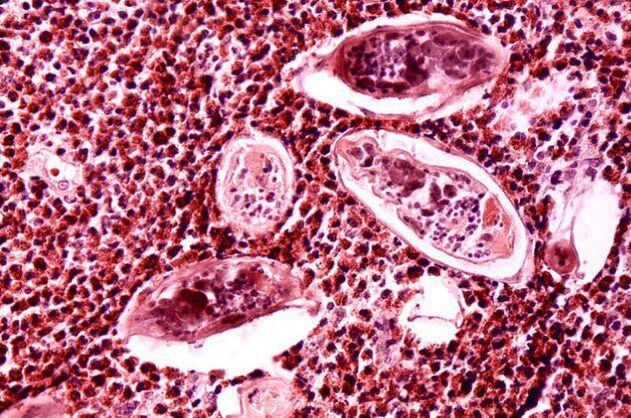
Cysticercosis
Cysticercosis is a disease associated with human infection with pig tapeworms. Parasites belong to the category of hardy, living in Asian countries. For adult development in the human body, penetration of 1 larva or part of the worm is sufficient. Parasites are highly regenerative, which complicates the treatment process.
The main signs of damage include urticaria, itching, general weakness, pain. Often, worms are placed under the skin, in muscles, eyes, internal organs and the brain. During adult development, tubercles or indurations form under the skin. Over time, it can increase, it brings discomfort. The main breeding sites of pig tapeworms are the shoulder, chest, arms, palms.
Dirofilaria
The main method of worm attack is the penetration of larvae through insect bites or contact with animals. Temporary carriers of larvae are cats and dogs, mosquitoes act as carriers. The length of the female worm is 30 centimeters, the length of the male worm is 10 centimeters.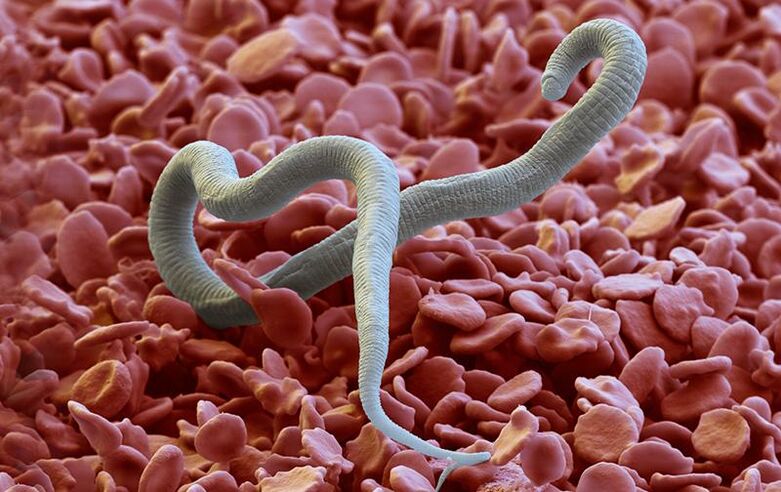 The development of parasites occurs below the top layer of the epidermis.
The development of parasites occurs below the top layer of the epidermis.
Eggs remain on human skin with mosquito bites. The hatching larvae penetrate deep into the skin through the injured skin area. There he went through all the stages of enlargement. The disease is accompanied by unbearable itching. Seals were recorded in the worm localization area. The patient feels the movement of the adult under the skin. Loss of vision is possible if exposed to helminths.
Worm treatment is done by surgical methods. After surgery, patients are shown medications that restore the affected skin and organs.
Scabies
Scabies is an infection of a person who has a scabies mite. The disease gets its name for severe and unbearable itching all over the body. In places where fleas are localized, people experience redness and spots.
Flea infections occur through body contact with an infected person or his or her personal belongings. Diagnosis is made by visual examination of the skin and laboratory tests.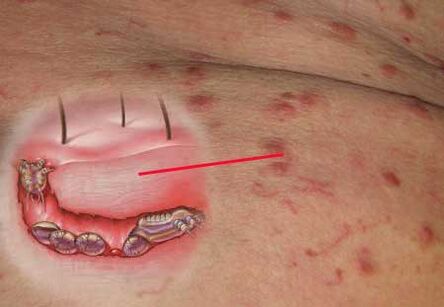 At home, diagnostics can be done with iodine. When it comes in contact with the affected skin, the spider’s web becomes noticeable - the pathway of flea movement under the skin of the infected person.
At home, diagnostics can be done with iodine. When it comes in contact with the affected skin, the spider’s web becomes noticeable - the pathway of flea movement under the skin of the infected person.
The main symptoms of scabies include:
- itching and redness of the skin;
- formation of fluid -filled blisters when scratching the skin;
- localization of lesions on the hands and joints.
The treatment of this disease is long and arduous. It is almost impossible to eliminate parasites completely.
Demodecosis
Demodectic ringworm is a human infection with subcutaneous lice. They are localized in the sebaceous glands of infected people. In the early stages, the disease can be easily confused with acne. When the mites multiply, the rash grows and spreads all over the face. Eyelash loss begins.
The diagnosis of demodicosis is simple. For this, a visual inspection was carried out and several laboratory tests were carried out. The treatment of the disease is long -term. In some cases, it takes several years. Infection with fleas occurs through direct contact with the patient, the use of personal items or cosmetic products of the infected person. Successful reproduction of fleas is facilitated by an unstable hormonal background, a weakened immune system.
Symptoms of the disease
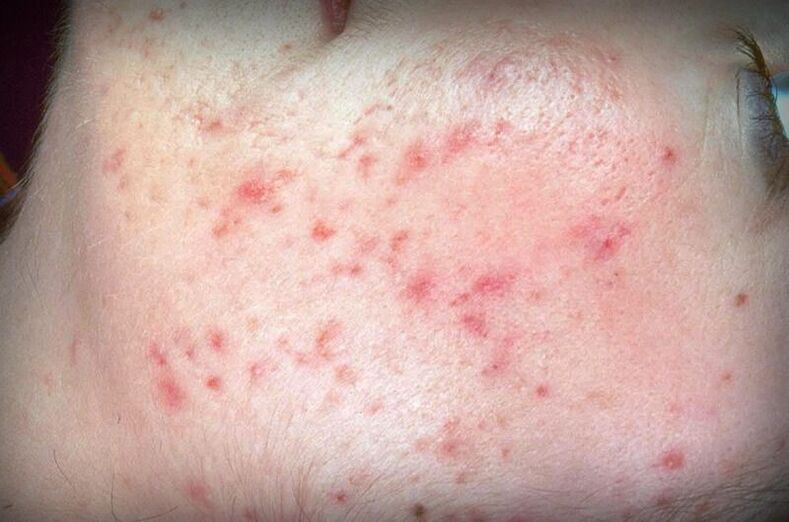
Modern medicine distinguishes several types of subcutaneous parasites. They trigger the development of skin dermatitis and disorders of internal organs. Depending on the pathogen in a person, symptoms appear in strange ways. Even so, there are some signs, when they appear, it is recommended to consult a specialist.
You can learn about worms in the body with a few signs:
- general weakness;
- temperature rise to 39 ° C;
- itching of the skin with varying degrees of intensity;
- appearance of skin rashes;
- interfere with the gastrointestinal tract;
- seal formation on the skin.
It is important to note that an early visit to the doctor allows you to quickly get rid of the body of parasites that live under human skin.
Diagnostic features
Subcutaneous parasites in humans are difficult to diagnose. For this reason, at the first suspicion of a lesion, it is necessary to consult a specialist. The complexity of the diagnosis is directly related to the latent course of the disease. Basically, obvious symptoms appear only a few years after the defeat, which has a negative impact on health.

A number of symptoms indicate helminthic invasion, but there is no general clinical picture of manifestations. It is necessary to exclude the defeat of patients with helminths in case of redness of the skin area, the appearance of persistent itching, various seals on the skin.
A visit to several specialists allows you to make a correct diagnosis:
- dermatologist;
- neuropathologist;
- allergies;
- infectious disease specialist;
- psychologist.
Consultation of a psychologist takes place if no deviation is found towards another specialist.
To clarify the diagnosis, the patient is given a laboratory examination:
- blood tests for antigens;
- examination of skin samples;
- smear;
- secret research;
- scraping from the affected area.
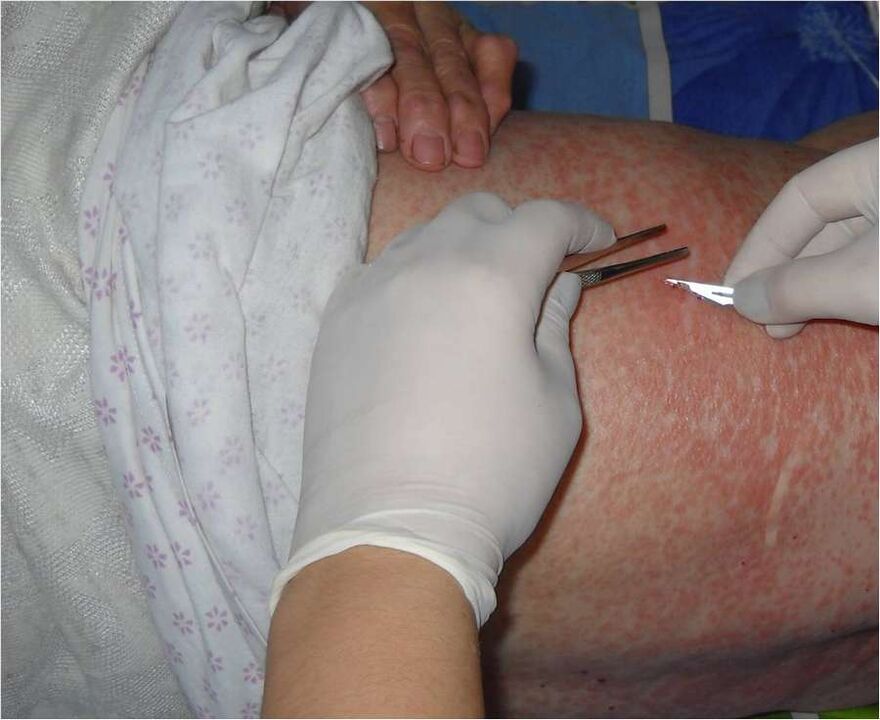
Laboratory examination results can detect parasites under the skin. If in the last six months before the onset of symptoms there was a trip to Asian countries or other tropical regions, this fact must be shown to the doctor.
Diagnosis of subcutaneous parasites requires the appointment of a competent therapeutic regimen. In these circumstances, the use of medicines or traditional medical methods not recommended by the treating physician is prohibited. Violation of the therapeutic regimen can lead to deterioration and intoxication of the body.
Effective treatment
In medical practice, there are two methods of therapy for parasites: medication and surgery. Depending on the complexity of the lesion, doctors use one method or both in combination. The choice of therapeutic treatment method depends on the health risks of the patient and the characteristics of the parasite.

The choice of therapy method is influenced by:
- the number of parasites in the patient's body;
- the regenerative ability of worms;
- reproduction rate;
- parasite localization;
- allergic reactions of patients;
- disease severity;
- possible or pre -existing complications.
Drug treatment involves the intake of medications. Drug action involves exposure in several directions:
- Destruction of adult worms and larvae in the body, prevention of their reproduction. For this, anthelmintic drugs are used.
- Removal of inflammation and destruction of the focus of infection. For this, a course of antibiotic therapy is conducted.
- Acceleration of toxin removal and elimination of allergic reactions. Patients were prescribed a course of antihistamines and glucocorticoid medications.
- Healing of the affected skin area. To accelerate the regenerative function of the epidermis, creams and ointments are used.
Surgical treatment of subcutaneous parasites is recommended in cases where there are serious complications and special locations of worms are present. The operation has shown high efficiency in cases where it is known that the body is only affected by one individual. Often, surgical intervention is used for dracunculiasis. The internal fluid of the worm contains toxic substances that can cause anaphylactic shock. In this case, holistic extraction of the parasite is indicated.
Methods of prevention
Infection with skin parasites in humans requires prolonged therapy. This problem can be avoided by following a few precautions:
- Compliance with hygiene rules. Hands should be washed under running water using soap or antiseptic. Especially after contact with unknown or stray animals. Scars, wounds and other damage to the skin should be treated with antiseptics.
- Product processing. Fresh vegetables and fruits should be rinsed thoroughly under running water before use. It is recommended to heat fish, chicken and meat. Avoid eating raw or semi -raw meat.
- Proven use of water sources. Water from unknown sources must be treated. Open water bodies and springs deserve special attention.
- Routine vaccinations. Before traveling to a tropical country, it is necessary to be vaccinated against major diseases.
- General use of makeup. Women should avoid sharing makeup, even with close friends.
- Swim in open water. Swimming in contaminated or untested waters is prohibited. During the summer, priority should be given to water bodies that have been tested for water quality.
A responsible attitude towards one’s own health and adherence to preventative measures helps prevent parasitic skin diseases.
























